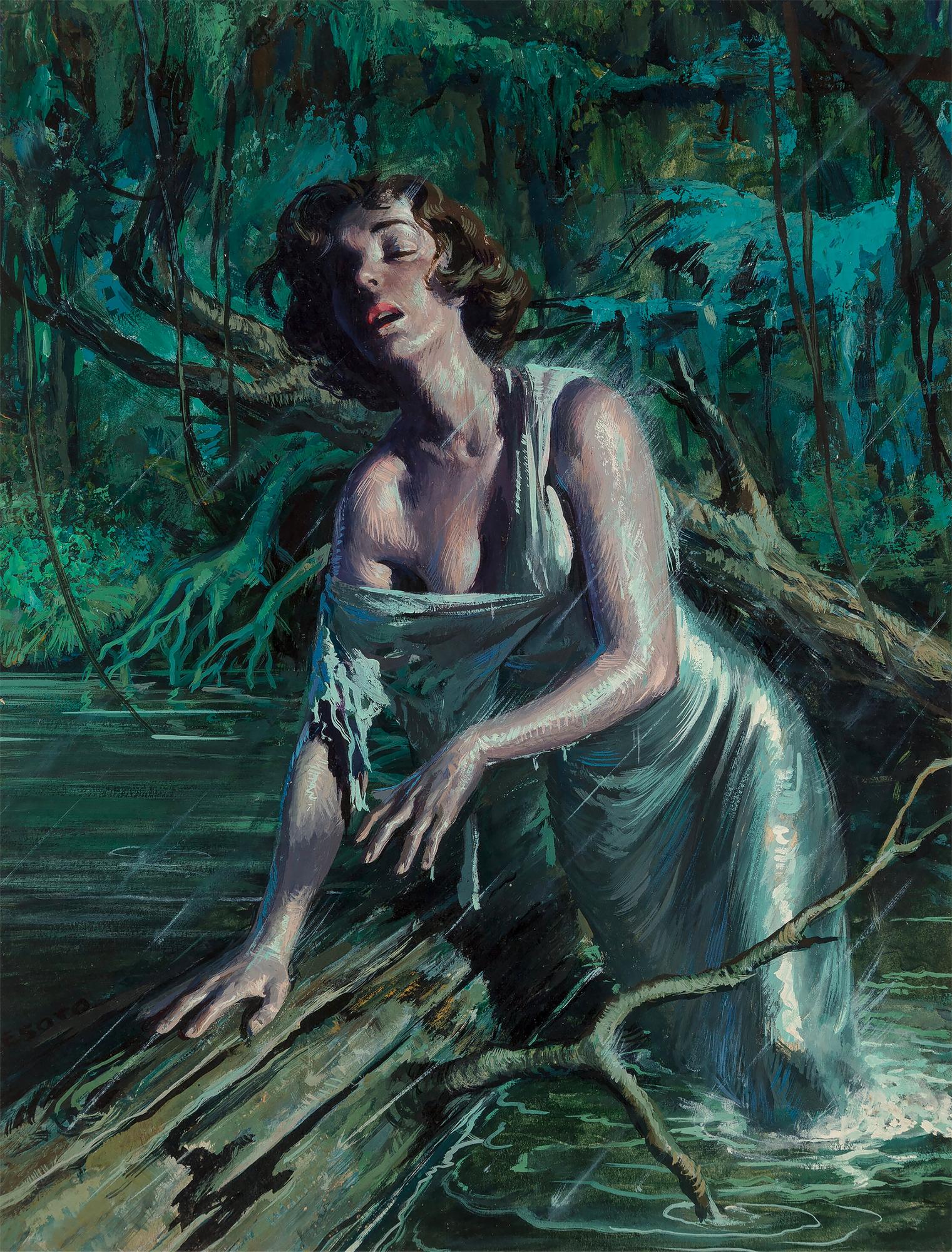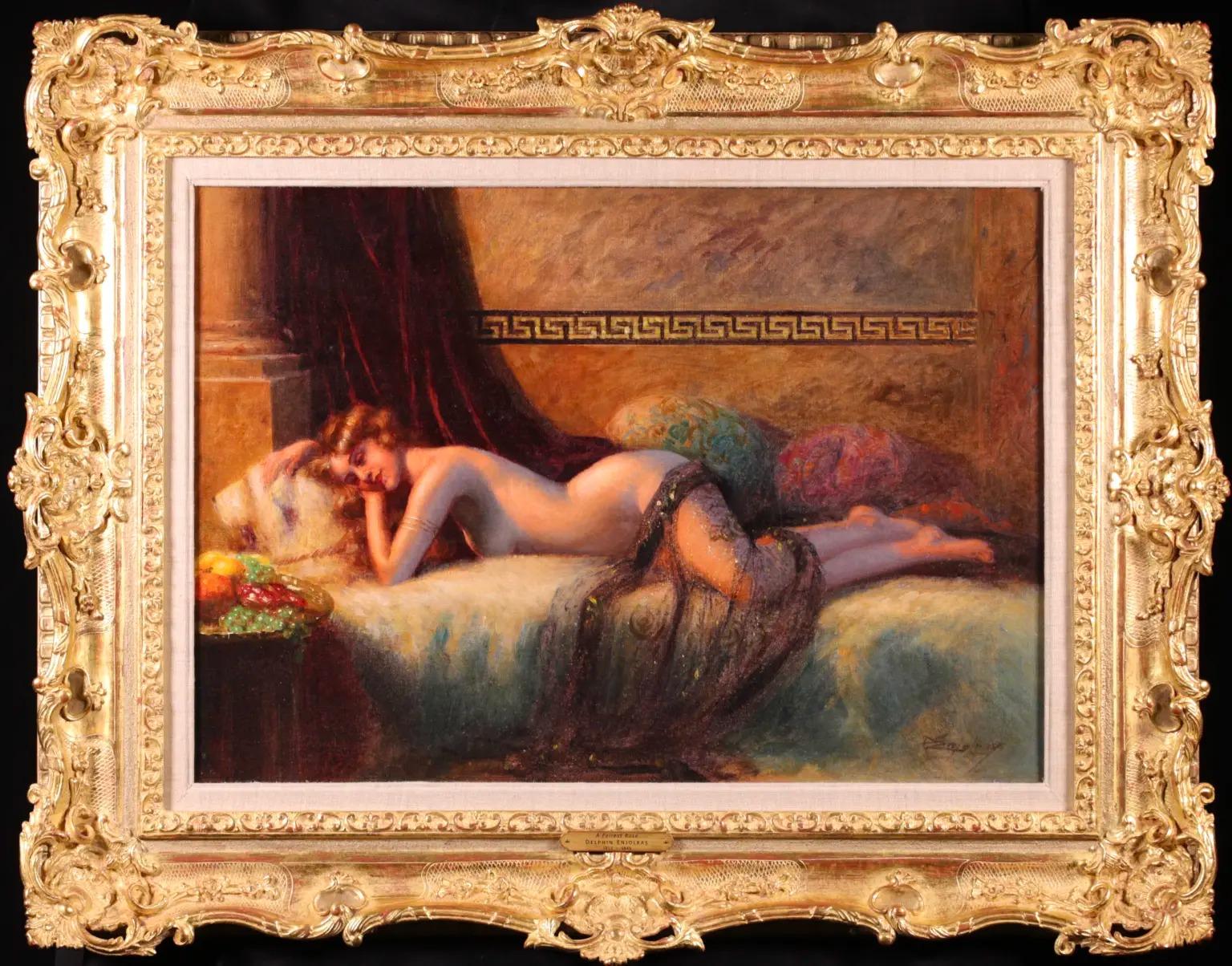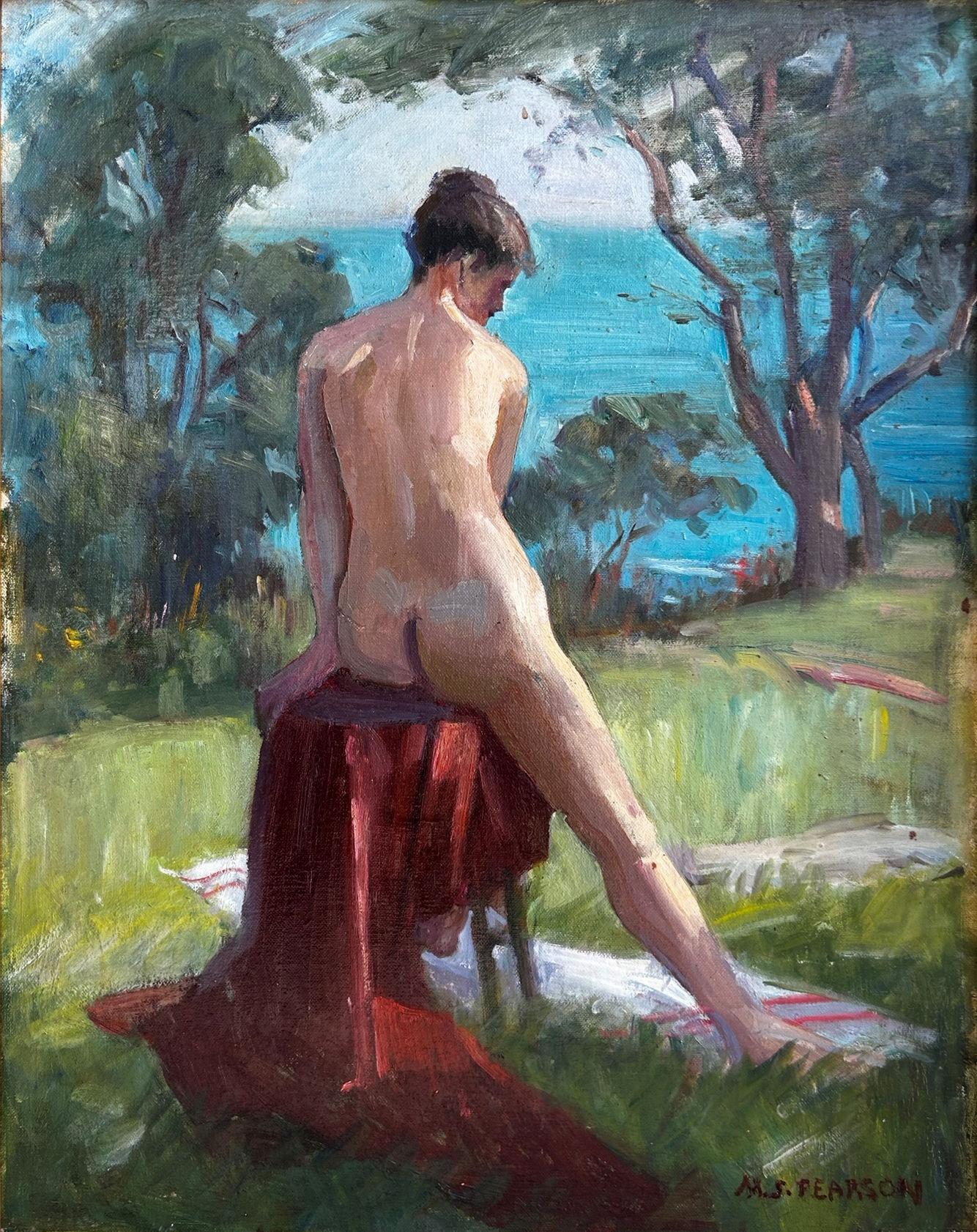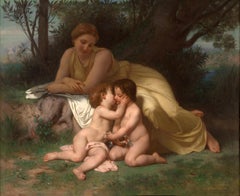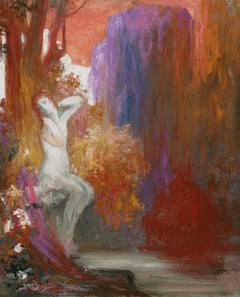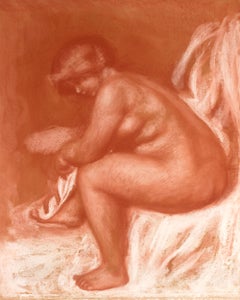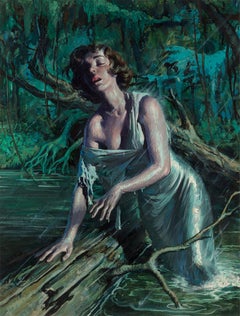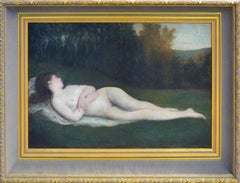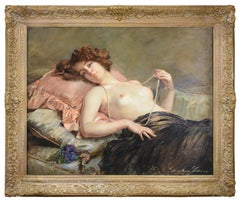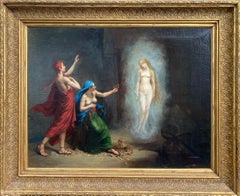
The Education of Achilles by Auguste-Clément Chrétien
View Similar Items
Want more images or videos?
Request additional images or videos from the seller
1 of 9
Auguste-Clément ChrétienThe Education of Achilles by Auguste-Clément ChrétienDated 1861
Dated 1861
$248,500List Price
About the Item
- Creator:Auguste-Clément Chrétien (1835 - 1913)
- Creation Year:Dated 1861
- Dimensions:Height: 57 in (144.78 cm)Width: 70.25 in (178.44 cm)
- Medium:
- Movement & Style:
- Period:
- Condition:
- Gallery Location:New Orleans, LA
- Reference Number:Seller: 30-75851stDibs: LU1865176602
About the Seller
5.0
Vetted Professional Seller
Every seller passes strict standards for authenticity and reliability
Established in 1912
1stDibs seller since 2013
17 sales on 1stDibs
Typical response time: 9 hours
Authenticity Guarantee
In the unlikely event there’s an issue with an item’s authenticity, contact us within 1 year for a full refund. DetailsMoney-Back Guarantee
If your item is not as described, is damaged in transit, or does not arrive, contact us within 7 days for a full refund. Details24-Hour Cancellation
You have a 24-hour grace period in which to reconsider your purchase, with no questions asked.Vetted Professional Sellers
Our world-class sellers must adhere to strict standards for service and quality, maintaining the integrity of our listings.Price-Match Guarantee
If you find that a seller listed the same item for a lower price elsewhere, we’ll match it.Trusted Global Delivery
Our best-in-class carrier network provides specialized shipping options worldwide, including custom delivery.More From This Seller
View AllYoung Mother Contemplating Two Embracing Children by William-Adolphe Bouguereau
By William-Adolphe Bouguereau
Located in New Orleans, LA
William-Adolphe Bouguereau
1825-1905 French
Jeune mère contemplant deux enfants qui s'embrassent
(Young Mother Contemplating Two Embracing Children)
Signed “W-Bouguereau” (bottom ...
Category
19th Century Academic Figurative Paintings
Materials
Canvas, Oil
Italian Panel with Satyr and Nymphs
Located in New Orleans, LA
This extraordinary Italian gouache and oil on canvas brings two of the most popular characters from Greek mythology vividly the life - the nymph and the satyr. Both creatures are famed for their carefree natures and lascivious temperaments, and tales abound of satyrs pursing nubile nymphs in order to rape or seduce them, usually with little success. One such narrative humorously unfolds in the present piece, which depicts an indignant satyr captured by three nymphs with a golden net.
The relationship between these two mythological creatures was a popular one for artists throughout the 18th and 19th centuries, though its origins stretch back to antiquity. Both satyrs and nymphs...
Category
Early 19th Century Other Art Style Figurative Paintings
Materials
Canvas, Oil, Gouache
Price Upon Request
Ondine
By Pierre Marcel-Béronneau
Located in New Orleans, LA
Mystical and mysterious, a mythological Ondine rests beside an ethereal forest pond in this majestic, original oil on canvas by French Symbolist Pierre-Amédée Marcel-Béronneau. A stu...
Category
20th Century Symbolist Nude Paintings
Materials
Canvas, Oil
Après le bain (After the bath)
By Pierre Auguste Renoir
Located in New Orleans, LA
For Pierre-Auguste Renoir, Impressionism's pre-eminent figure painter, depicting the nude was an exercise in bringing the canvas to life. He once said, “I look at a nude, I see myriads of minuscule shades. I have to find those which will make the flesh on my canvas come to life and resonate.” This compelling portrait by Renoir entitled Après le bain presents the nude figure of a woman in a serene, private moment, absorbed in the task of drying herself after a bath. The artist’s mastery of light and shading is incredible, achieving a sense of vitality in this otherwise ordinary scene.
Renoir is celebrated for his figural work, especially his Rubenesque female nudes, however, it was not until the artist was in his forties that he depicted the nude with any frequency. In 1881, Renoir traveled to Italy, where he studied the works of the Renaissance masters and the ancient art of Pompeii and Rome. Upon his return to France, the nude became his favored subject, and he used the motif to combine the spontaneity of Impressionism with the solid modeling of classical painting. Renoir’s medium here, sanguine, a reddish-brown chalk, was used extensively in the Renaissance by Leonardo (who employed it in his sketches for the Last Supper), Michelangelo and Raphael. Its warm hue lends itself well to depicting flesh, and the chalk drawing allows for a greater focus on line, form and texture in a departure from the aspects of color and light that so often preoccupied the Impressionists. Après le bain conveys the impression of arrested motion with perfect naturalness, deftly capturing the moment before the elegant lines of the sitter's form change position.
The sitter is almost certainly Gabrielle Renard, the nanny to Renoir’s children and a frequent model for the artist. Gabrielle was the cousin of Renoir’s wife, Aline, and came to Montmartre to work for the family at the age of 16. She developed a strong bond with the family and became a favorite subject for Renoir, appearing in several of his most important works, including his 1911 Gabrielle with a Rose (Musée d'Orsay). When Renoir began to suffer from severe rheumatoid arthritis that would eventually leave him unable to walk and scarcely able to grasp a paintbrush, it was Gabrielle that would assist the artist by positioning the paintbrush between his crippled fingers.
Born in Limoges, France in 1841, Renoir began his career as an apprentice to a painter of porcelain wares. He later moved to Paris at the age of 21, enrolling at the prestigious École des Beaux-Arts. It was here, while studying under Charles Gleyre, that Renoir attained a tremendous appreciation for the academic style of painting, a quality that would last throughout his career. This was also when he met Claude Monet and several other classmates, with whom he would later form the Impressionists.
Working closely with Monet, Renoir began experimenting with the portrayal of light and its effect on his canvases. The youngest member of the Impressionist movement, an astute Renoir recognized how a subject was constantly changing due to the dynamic effects of light on color. Relying heavily upon his academic training that focused on composition, lines and descriptive details, Renoir distinguished himself among his contemporaries. His intuitive use of color and expansive brushstroke, along with acute attention to his subject, have placed him among the finest painters in history.
This work is accompanied by a certificate of authenticity and will be included in the forthcoming catalogue raisonné of the work of Pierre-Auguste Renoir from the Wildenstein Plattner Institute.
Circa 1898
Canvas: 43 1/2" high x 35 1/2" wide
Frame: 57 3/4" high x 49 1/4" wide
Provenance:
Galerie Durand-Ruel, Paris (acquired from the artist on January 25, 1899)
J. Pereire Collection, France (1966)
Sam Salz, New York (before 1981)
Claus Virch, Paris
French Compagny, Inc., New York
Larry Silverstein, New York (circa January 1987)
Le Clos de Sierne Gallery, Geneva
Galerie Heyram, Paris (October 1987)
Francis Gross
M.S. Rau, New Orleans
Literature:
B. Schneider, Renoir, Berlin, 1957, p. 95 (illustrated in color, p. 83)
M. Gauthier, Renoir, Paris, 1958, p. 83 (illustrated in color; erroneously dated '1916' and titled 'Woman in her toilet')
F. Fosca, Renoir, L'homme et son obra, Paris, 1961, p. 280 (illustrated, p. 95; erroneously dated 'about 1890' and titled 'After the Bath...
Category
19th Century Impressionist Nude Paintings
Materials
Canvas, Paper, Chalk
Price Upon Request
Solitude
By Guillaume Seignac
Located in New Orleans, LA
French Academic painter Guillaume Seignac was renowned for his masterful treatment of the idealized nude. His languishing female subjects based on Greco-Roman prototypes were and rem...
Category
19th Century Academic Nude Paintings
Materials
Canvas, Oil
Solitude
By Guillaume Seignac
Located in New Orleans, LA
Signed “G-Seignac” (lower right)
Oil on canvas
French Academic painter Guillaume Seignac was renowned for his masterful treatment of the idealized nude. His languishing female subje...
Category
19th Century Academic Nude Paintings
Materials
Canvas, Oil
You May Also Like
Sexy Woman in a Swamp Storm - Pulp Magazine, Hispanic Artist, Mid Century
By Rafael DeSoto
Located in Miami, FL
Rafael Maria de Soto y Hernandez was born February 18, 1904 in Aguadilla, Puerto Rico. It's high drama in the swamp. Woman in the Swamp is a masterfully executed example of Pulp Art and showcases Rafael DeSoto's full command of academic painting.
DeSoto did pulp covers up until the industry's demise in the 1950s for such magazines as Adventure, Argosy, Black Mask, Captain Zero, Crack Detective, Fantastic Novels, 15-Story Detective, Fifteen Western Tales, New Detective, Smashing Detective, and Walt Coburn's Western Magazine. He also painted many covers and interior story illustrations for men's adventure magazines, such as Action For Men, Adventure, Battle Cry, For Men Only...
Category
1950s Academic Figurative Paintings
Materials
Oil, Board
Late 19th Century Reclining Nude California School
Located in Soquel, CA
Late 19th century California School reclining nude female figure by anonymous 19th Century artist. In the style of William-Adolphe Bouguereau. ...
Category
Late 19th Century Academic Nude Paintings
Materials
Canvas, Oil
$3,200 Sale Price
20% Off
The pearl necklace and the violets. Women in art!
By Madeleine Lemaire
Located in New York, NY
“The pearl necklace and the violets” . Oil on canvas 83x103cm, signed, untouched.
An excellent example of french academic art from late XIX century.
A great example of women in art...
Category
Early 20th Century Academic Nude Paintings
Materials
Canvas, Oil
The Apparition - Large, Fine 1884 French Oil Painting - MAKE OFFER
Located in New Orleans, LA
A stunningly dramatic and well-rendered oil on canvas painted by French artist Antoine Marie Roucole in 1884. With the ornate antique gilt plaster frame, and with its size, it has t...
Category
1880s Academic Nude Paintings
Materials
Oil
Forest Nymph - Figurative Nude Oil Painting Colors Brown Grey Pale Blue Green
By Lyubena Fox
Located in Sofia, BG
"Forrest Nymph" (2016)
Oil on canvas
80 x 100 cm unframed
Painting was started in 2015, most of it was finished by 2016, the last touches done in 2019. Inspired by the 19th century French painter Bouguereau, she wanted to depict a nymph that inhibits the forest, wearing a flower crown made from Hepatica flowers, wild forest flowers.
The Painting’s Qualities
Lyubena Fox...
Category
2010s Academic Figurative Paintings
Materials
Canvas, Oil
Fairest Rose - French Academic Nude Oil Painting by Delphin Enjolras
By Delphin Enjolras
Located in Marlow, Buckinghamshire
Signed nude in interior oil on canvas circa 1900 by French academic painter Delphin Enjolras. The piece depicts a red-haired nude resting on a bed in a lush boudoir with a sheer scar...
Category
Early 20th Century Academic Nude Paintings
Materials
Canvas, Oil
Recently Viewed
View AllMore Ways To Browse
Saint Clement Lion
Vintage Gymnastics Poster
Vintage Japanese Calendar
Vintage London Zoo Posters
Vintage Porsche Race Cars
Vintage Posters Palm Trees
Vintage Puerto Rican Posters
Vintage Resuscitator
Vintage Showgirls Art
Vintage Vietnam Travel Posters
Vintage Winnie The Pooh Prints
Visage Ceramic Plates
Walter Dendy
Wayne Thiebaud Poster
William Bradford Green
Wolf Fur Coat
Woodstock Festival Black And White
Yaacov Agam Star
